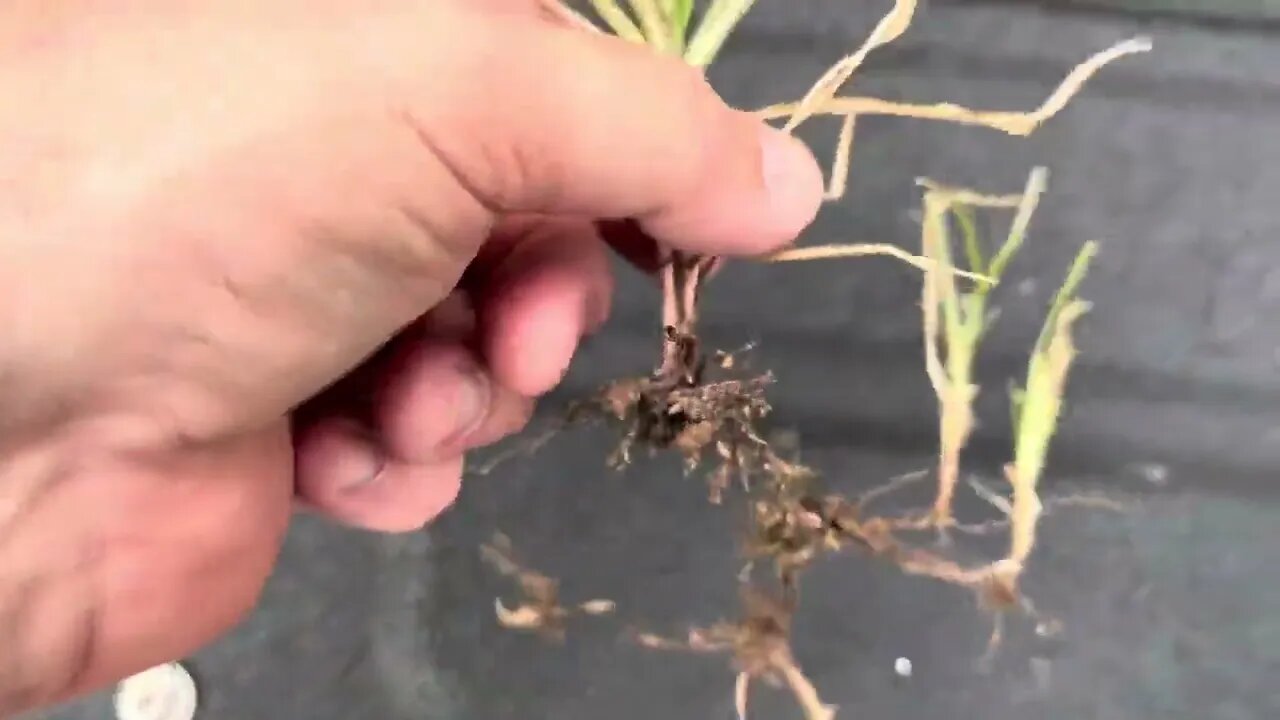Premium Only Content

Nutsedge problem using fire mulch to condition soil, Duc man pulled plow #lawn #mulching #viral #pet
Nutsedge, also called nut grass, is an aggressive weed that often plagues lawns in the summertime throughout the United States. There are two varieties of nutsedge: purple nutsedge (Cyperus rotundus) and yellow nutsedge (Cyperus esculentus). Both varieties are perennial weeds in the sedge family that regrow each year and reproduce in a manner that makes them difficult to manage. Nutsedge is especially hard to eliminate because it has an immense root system with underground tubers, and it doesn't respond to standard weed killers made for broadleaf weeds.
How to Identify Nutsedge
Before you take the steps to eliminate a nutsedge infestation, you should be certain that your grassy weeds are in fact nutsedge plants. Consider the below nutsedge characteristics and compare them to the weeds in your lawn.
Appearance: Nutsedge looks like extra-long grass with three leaves per stalk. Yellow nutsedge typically has bright yellow-green leaves and dark yellow flowers when mature, while purple nutsedge has dark green leaves and dark purple or red flowers. The easiest way to identify nutsedge is to look for its triangular stem. If you roll the stem between your fingers, you'll feel that the stem has three sides (as opposed to grasses which have round stems).
Root system: Nutsedge has horizontal underground stems called rhizomes that may grow up to 18 inches beneath the soil surface. Attached to the rhizomes are small tubers (known as nutlets) that can sprout a completely new plant—meaning that numerous nutsedge plants can grow out of the same root system. A single plant may produce thousands of new tubers every year, resulting in vast patches of nutsedge plants.
Growing season: Nutsedge grows during the late spring and summer. While it varies depending on your specific climate, yellow nutsedge generally appears in early summer and purple nutsedge grows in late summer. Since nutsedge is a perennial plant, it will regrow every year.
Growing conditions: Nutsedge thrives in moist areas with poor drainage.
How to Get Rid of Nutsedge in 5 Steps
While nutsedge requires more effort to eliminate than most weeds, this step-by-step guide will help you get your lawn nutsedge-free within a couple months.
1. Purchase a post-emergent herbicide. Post-emergent herbicides target nutsedge that has already bloomed. When purchasing your herbicide, search for one intended for use on your specific type of nutsedge (some herbicides are labeled for both purple and yellow nutsedge, while some only work on one type). Make sure the herbicide you select targets both the seed head above ground and the root system below ground. The best post-emergent herbicides also contain a surfactant to help the herbicide stick to the nutsedge leaves, making the active ingredient more effective. Some herbicides come in a ready-to-spray formula, while others are a concentrate that you'll need to mix with water before use.
2. Make sure your herbicide is compatible with your grass. If you use the wrong type of herbicide for your grass type, you risk seriously damaging your lawn. This is why it's essential to check the herbicide label and confirm it's compatible with your type of grass. For example, some post-emergent herbicides may only be appropriate for cool-season lawn grasses, while others are made for warm-season grasses.
3. Apply the herbicide to your lawn. Before herbicide application, read the product label to ensure you use it properly, and protect your skin from potential chemical exposure by wearing pants, long-sleeves, and gloves. Depending on the type of herbicide, it will generally take one to three weeks to see visible results. To achieve optimal results, treat your lawn in the late spring or early summer right after the nutsedge nutlets first sprout; when nutsedge is still young, it's much easier to kill.
4. Re-treat your lawn if necessary. For effective control, you may need to apply more than one treatment of post-emergent herbicide. If your first treatment fails to kill all the underground nutlets and you don’t re-treat, the nutsedge will grow back the following growing season.
5. Practice proper lawn care. Maintaining healthy lawn grass is a great way to deter future nutsedge growth. Nutsedge loves moist soil, so avoid overwatering your lawn and aerate your soil to increase drainage capacity. When you water the lawn, do it deeply and infrequently to encourage healthy roots and vigorous grass. In addition, check that you're mowing your lawn at the correct height for your type of grass; when you cut turf grasses too short it creates ideal conditions for nutsedge growth.
THE DUC's Plow | Man-Pulled Plow
Experience the ultimate gardening tool with THE DUC's Plow! Create straight rows, furrows, hill up potatoes, bury weeds, bury irrigation system, and loosen soil - all with ONE TOOL! Simplify your gardening tasks and maximize efficiency. Get your THE DUC's Plow today and discover the power of MULTIPLE JOBS in a single tool!
-
 11:18
11:18
Dr Disrespect
1 day agoDr Disrespect: THE BEST AND WORST OF GAMESCOM 2025
90.4K13 -
 2:08:25
2:08:25
Side Scrollers Podcast
22 hours agoEXCLUSIVE: Marty O’Donnell BREAKS SILENCE On Bungie Drama + Kotaku Hypocrisy + MORE | Side Scrollers
39.7K5 -
 3:24:29
3:24:29
Wahzdee
4 hours agoBack on BF2042 – Which Sniper Is Actually Worth It?
8.57K1 -
 2:31:49
2:31:49
MattMorseTV
22 hours ago $0.78 earned🔴Trump's Oval Office BOMBSHELL.🔴
46.7K60 -
 25:14
25:14
GritsGG
18 hours agoRank 1 Player Spectates Casual Solos!
28.4K1 -
 LIVE
LIVE
Lofi Girl
2 years agoSynthwave Radio 🌌 - beats to chill/game to
414 watching -
 4:33:40
4:33:40
FreshandFit
13 hours agoAfter Hours w/ Girls
268K151 -
 2:33:36
2:33:36
Badlands Media
13 hours agoOnlyLands Ep. 21: From Trump’s VP Pick to Green Energy Grift
86.9K22 -
 1:07:26
1:07:26
Inverted World Live
16 hours agoThe War Against Robots w/ Joe Allen
117K5 -
 6:08:31
6:08:31
SpartakusLIVE
16 hours agoWARZONE NUKE IS BACK?! || Solo Challenge CHAMPION to start, duos w/ the Dawg later
115K1